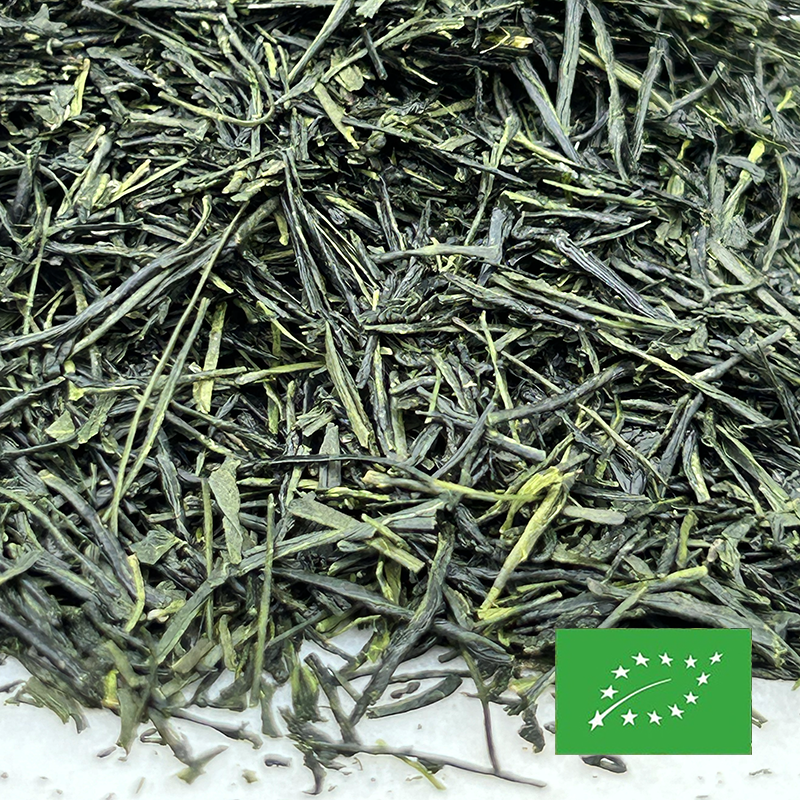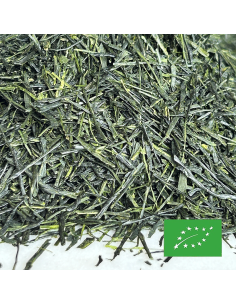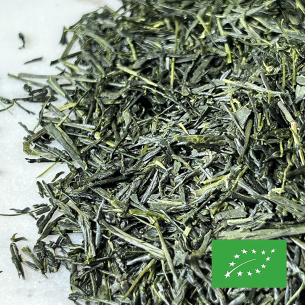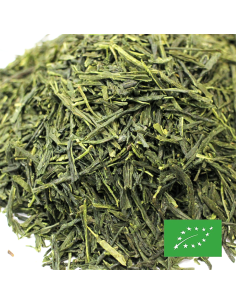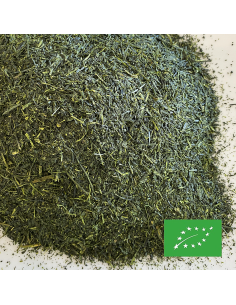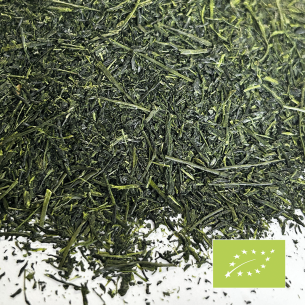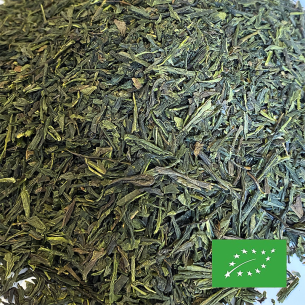GYOKURO ASANOKA ORGANIC CERTIFIED 2024
Gyokuro produced in Hioki, Kagoshima in southern Japan in April 2025.
2025 is a great year for Gyokuro. We find a lot of umami, texture and vegetal flavors in very balanced teas, long in the mouth and re-infusable several times. We are here in the presence of a mid-range Gyokuro, but the harvest was so good this year that it is very satisfactory even for amateurs looking for fairly high-end Gyokuro.
The cultivar: The Yabukita cultivar is a variety of tea plant (Camellia sinensis) native to Japan. It is widely grown and used for the production of green tea, particularly for sencha tea, which is one of the most popular forms of tea in Japan.
Yabukita was developed by a Japanese farmer named Yamamoto Kahei in the early 20th century. He crossed different varieties of tea plants to create a robust plant, adapted to the climatic conditions of Japan. Yabukita has proven to be a very successful cultivar due to its favorable agronomic characteristics and tea quality.
Yabukita tea leaves have an elongated shape and a slightly rough texture. They produce a clear, aromatic infusion with a smooth, balanced flavor. Yabukita is valued for its ability to retain its aromas and adapt to different processing methods, making it a popular choice among Japanese tea producers.
Infusion advice: This is a high-end tea and we strongly recommend respecting the basic dosages as well as using quality water to infuse this tea.
Quality water will be very weakly mineralized water. Check the dry residue on the label of the water you wish to use, a value between 20 and 100mg/L will be suitable. That said, this is not an infallible rule, some waters at 130mg/L work well (Volvic) while others below 100mg/L have less good results. Quite famous and inexpensive water is the source of the Grand Barbier which you will find at Carrefour.
Infusing a Gyokuro is not very complicated if you respect the dosages, temperature and infusion time. By respecting these parameters you will be able to obtain extraordinary umami, sweet flavors. it is important to use a very small teapot, the goal is to make sort of shots of whiskey, 2 or 3 shots of whiskey per infusion. To do this, use a 10cl teapot. The most suitable teapots are called Shiboridashi in Japan. Small teapots of 10cl and less are suitable even if they are not shiboridashi. Place 5 to 8g of leaves for 50 seconds of infusion with water at 60 degrees.
Cultivar:
This is a cross between Yabukita (the most widespread cultivar in Japan) and a Chinese cultivar (often referred to as Hiramizu #1 or simply an unnamed Chinese cultivar).
🌿 Botanical Characteristics
Leaves: Dark green, fairly tender, suitable for machine picking.
Growth: Vigorous, with good cold resistance.
Harvest Time: Slightly earlier than Yabukita.
🍵 Flavor Profile
Sweet and rounded aroma, with vegetal and slightly floral notes.
Less astringent than Yabukita.
Good balance between umami and freshness.
Highly valued for premium teas, particularly sencha or even gyokuro in some regions.

